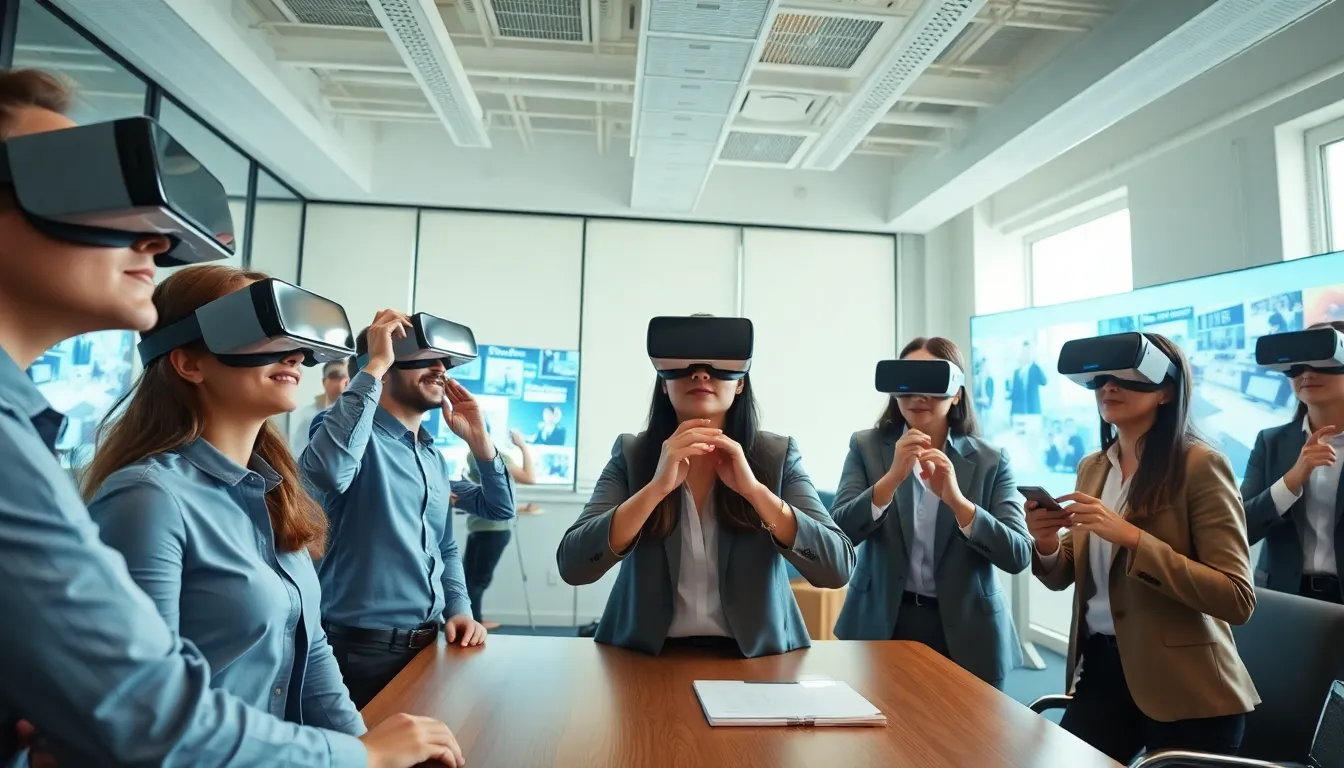Imagine slipping on a pair of goggles and diving headfirst into an entirely new world. Whether you’re exploring the depths of the ocean or attending a concert where the crowd is as alive as your living room couch, this is the magic of Meta Virtual Reality. It’s not just a fancy gadget: it’s a gateway to transforming how we interact, socialize, and collaborate in the digital realm. So, let’s take a journey down this rabbit hole, unraveling the intricacies, advancements, and potential pitfalls of this groundbreaking technology.
Table of Contents
ToggleWhat Is Meta Virtual Reality?

Meta Virtual Reality refers to an immersive digital experience that combines sophisticated visual environments with interactive components and social elements, allowing users to engage in virtual locales as if they were physically present. Through advanced technologies such as augmented reality (AR) and virtual reality (VR), users can connect and communicate in real time, breaking the boundaries of traditional online interactions. Essentially, it’s about transforming our perception of reality by merging the digital and physical worlds, enabling us to engage in experiences that were previously relegated to the realms of imagination.
The Evolution of Virtual Reality
The journey of virtual reality has been nothing short of remarkable. It began in the 1960s with the creation of the Sensorama, a device that promised to envelop users in simulated experiences. Fast forward a few decades, developers began to experiment with more complex systems, leading to the first VR headsets in the 1990s. But, mainstream acceptance took a little longer.
With advancements in technology, particularly in graphics and processing power, the 2010s saw a VR renaissance. Companies like Oculus, HTC, and Valve pushed the boundaries, enhancing user experiences. Meta (formerly Facebook) stepped into this arena with its acquisition of Oculus, marking its commitment to pioneering immersive social experiences that combine VR and the metaverse, a shared virtual space where the digital and real world merge.
Key Features of Meta Virtual Reality
Meta Virtual Reality stands out due to its array of innovative features. First and foremost is the concentration on social connectivity. Unlike traditional VR systems that focus solely on the individual user experience, Meta emphasizes community-building, enabling friends, family, and coworkers to interact seamlessly in virtual spaces.
Also, the intuitive interface enhances user engagement. With voice commands, hand tracking, and sophisticated haptics, participants can navigate environments and manipulate objects as they would in the real world. Besides, cross-platform compatibility means that users aren’t restricted. Whether they own an Oculus device or a smartphone, they can still be a part of the immersive experience.
Applications of Meta Virtual Reality
The applications of Meta Virtual Reality span across various fields. In education, immersive simulations can enhance learning experiences, offering students real-life scenarios they might not encounter otherwise. Imagine biology students exploring a digital human body or history students walking the Roman streets, it’s education redefined.
Similarly, in the business realm, companies leverage Meta’s platform for virtual meetings and collaborations. It transforms team dynamics, allowing coworkers from around the globe to brainstorm and strategize as if they were in the same room. Entertainment also thrives: gamers can collaborate or compete in expansive landscapes without ever stepping outside. This adaptability makes Meta Virtual Reality a versatile tool that caters to numerous industries.
The Impact on Social Interaction and Collaboration
Meta Virtual Reality has redefined social interaction in meaningful ways. The technology creates a sense of presence that transcends conventional video calls. Friends can meet virtually, engage in activities, or even attend events together from miles apart, fostering connections that feel genuine.
Also, this immersive interaction extends to professional environments as well. Businesses are beginning to realize the implications of virtual collaboration. Team members can brainstorm on 3D models, share their screen in real time, and build rapport, elements that physical meetings can sometimes lack. This shift towards virtual collaborate demonstrates an evolving landscape where social connections are strengthened, regardless of distance.
Challenges and Criticisms of Meta Virtual Reality
But, it isn’t all smooth sailing in the world of Meta Virtual Reality. One major criticism revolves around privacy concerns. With an extensive data collection framework in place, users fear a loss of their personal space in this new digital domain. Balancing user safety with personalization remains a significant challenge.
Also, some argue that excessive engagement with virtual environments could lead to social isolation. While it offers enhanced connectivity, dependency on digital interactions might diminish traditional human relationships. Also, the technology itself isn’t universally accessible, it requires proper hardware and reliable internet connections, creating a disparity that could deepen the digital divide.
The Future of Meta Virtual Reality
Looking ahead, the trajectory of Meta Virtual Reality appears bright but requires careful navigation. As technology continues to evolve, Meta is likely to refine its offering, enhancing realism and interactivity. Adoption rates are expected to surge, particularly among younger generations who naturally gravitate toward digital experiences.
Advancements in hardware will also play a pivotal role. Lighter, more comfortable headsets combined with improved haptic feedback promise a more engaging experience. Besides, as accessibility increases and the technology becomes more affordable, the potential applications could expand into new territories, revolutionizing entertainment, education, business, and beyond.



